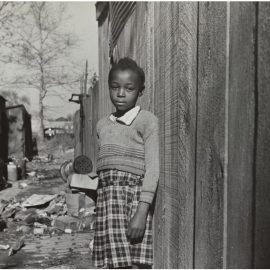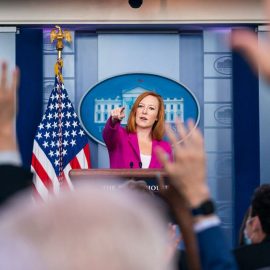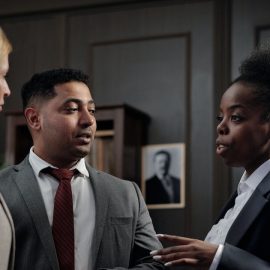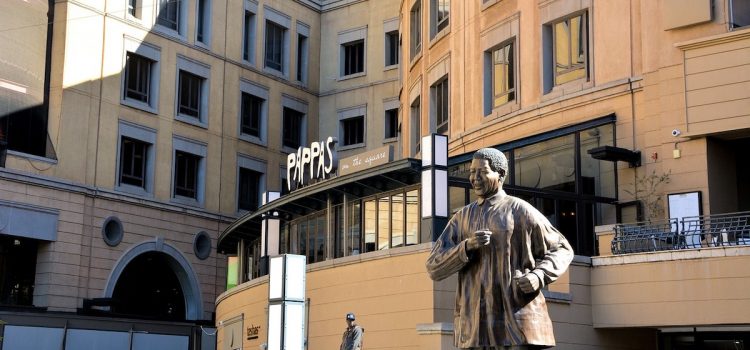
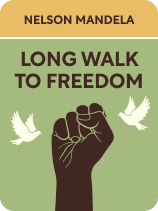
This article is an excerpt from the Shortform book guide to "Long Walk to Freedom" by Nelson Mandela. Shortform has the world's best summaries and analyses of books you should be reading.
Like this article? Sign up for a free trial here.
Why did Nelson Mandela join the African National Congress? Why did he later help create the ANC Youth League?
Nelson Mandela’s struggle against a culture of oppression and apartheid wasn’t just about securing legal rights for Blacks but also about fostering national and racial pride. That led him to join the ranks of the African National Congress (ANC) in the early 1940s.
Continue reading to learn his motivations to join the ANC and his early efforts within the party.
Nelson Mandela Joins the ANC
Why did Nelson Mandela join the African National Congress? He had come to understand that Black South Africans had to truly believe that they deserved to be free and that they had the ability to rule themselves. A strong supporter of this movement of African nationalism, he later would join the ANC party. Let’s take a look at the background of his involvement.
Mandela notes that his lack of a law degree didn’t stop him from getting heavily involved in both law and politics. In the early 1940s, one of Mandela’s cousins introduced him to Walter Sisulu, a real estate broker and anti-apartheid activist who soon became a prominent figure in Mandela’s life.
(Shortform note: As well as being a prominent part of Mandela’s life—and thus his biography—Walter Sisulu was an important figure in South African history in his own right. He was a political activist who spent his life campaigning for racial equality in South Africa, and he spent 26 years in prison for his anti-apartheid actions. Sisulu served as deputy president of the ANC from 1991 until 1994, when his failing health forced him to retire. He passed away on May 5, 2003, shortly before his 91st birthday.)
Sisulu arranged a clerk job for Mandela at one of the largest law firms in Johannesburg, where Mandela met another Black clerk named Gaur Radebe. Sisulu and Radebe were both heavily involved with the African National Congress (ANC), a political party that welcomed all Africans. The ANC sought to use peaceful methods—mainly petitions and peaceful demonstrations—to garner public support for overturning the racist, segregationist laws that held back Black South Africans.
Inspired by Sisulu and Radebe, both of whom he greatly admired, Mandela soon became involved with the organization as well. Sisulu and Radebe thought the ANC was the best way, and perhaps the only way, for Black South Africans to effect political change.
However, Mandela notes, many people at the time had become frustrated with the ANC. Its leaders were afraid of the National Party and therefore unwilling to lead large-scale marches, demonstrations, and similar disruptive actions, which they feared would cause the NP to violently crack down on them. As a result, many South Africans saw the ANC as a privileged and complacent organization, whose senior members were more concerned with protecting their own welfare than with fighting for equality like they’d promised to do.
(Shortform note: Although the ANC had an enormous surge in popularity in the 1990s, its reputation has backslid to much the same place it was before Mandela joined—the ANC today is mired in accusations of incompetence and corruption. Though the ANC was effective in the post-apartheid years, many South Africans now say that it was more effective at creating change than in leading the new country it created.)
That’s why, in 1943, Mandela, Sisulu, and others spearheaded the creation of an ANC Youth League: They believed that the aging leaders of the ANC couldn’t relate to young people anymore and that the ANC’s leadership lacked the courage and drive to effectively fight for change. They hoped to help the ANC expand through new membership and to motivate the organization as a whole with youthful energy and determination. The ANC Youth League officially met for the first time in 1944.
(Shortform note: The ANC Youth League still exists today, and any South African between the ages of 14 and 35 can be a member. People aged 18 and older are expected to take active roles in the ANC and the community, similar to members of the wider ANC. However, like the ANC as a whole, the popularity of the Youth League is declining as many South Africans feel that it no longer represents their interests.)

———End of Preview———
Like what you just read? Read the rest of the world's best book summary and analysis of Nelson Mandela's "Long Walk to Freedom" at Shortform.
Here's what you'll find in our full Long Walk to Freedom summary:
- Nelson Mandela’s extraordinary life story, as told by the man himself
- Why it took Mandela over 40 years to finish his law degree
- Nelson Mandela’s legacy and what South Africa is like in its post-apartheid years



